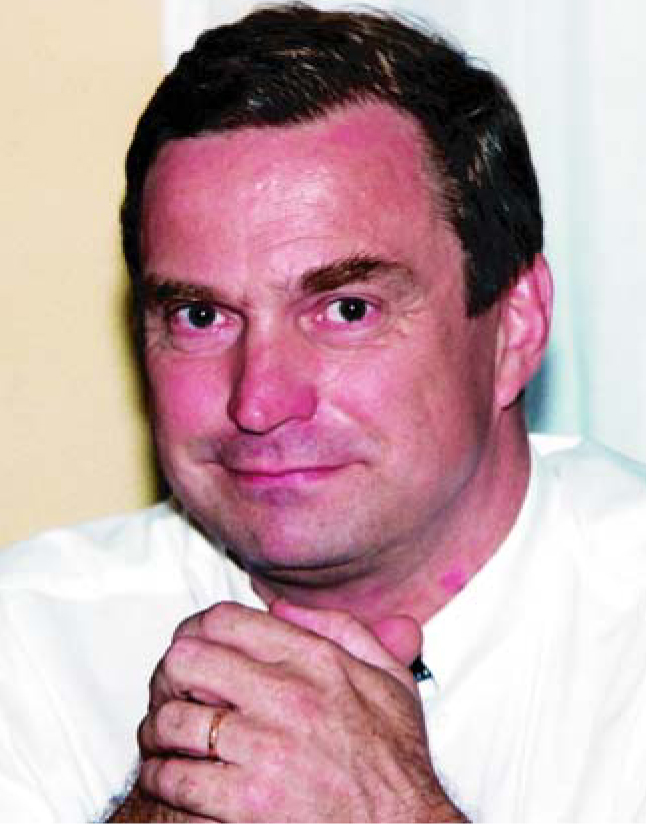Martti Mikael Salomaa
DOI: 10.1063/1.1995760
Martti Mikael Salomaa, a professor of theoretical materials physics at the Helsinki University of Technology (TKK), died of natural causes on 9 December 2004. He contributed to many areas of condensed matter theory, including superfluid helium-3, Bose–Einstein condensation (BEC) of alkali atoms, superconductivity, quantum computing, and acoustic-wave propagation in solids.
Salomaa was born on 6 October 1949 in Kotka, Finland. He was one of two Finn students who were the first to receive a scholarship to study at Atlantic College in Glamorgan, Wales. He completed his secondary education at Atlantic, where his lifelong love for the sea and sailing began. His successfully designed high-speed lifeboat for a student project was one of his proudest accomplishments. Building was a passion, and his final years of life were enlivened by the construction he and his wife, Margaretha, undertook of a summer cabin on an island in the Baltic.
Salomaa took his undergraduate and graduate degrees at TKK, where he received his Licentiate of Technology degree in 1974 and his PhD in 1979. Building on earlier work on normal 3He, his thesis, which was carried out under adviser Christopher Pethick and in collaboration with Gordon Baym, laid the foundation for the theory of the mobility of negative ions and electrons in the superfluid phase. That work fitted squarely into the ultralow-temperature experimental program at TKK’s Low Temperature Laboratory.
After spending time as a postdoc first at UCLA and then at the University of Virginia in Charlottesville, Salomaa returned to Helsinki in 1982 to become director of the Low Temperature Laboratory’s theory group. The next period of his career saw the elucidation of vortex structures in rotating 3He. Salomaa, with Grigory Volovik, made fundamental contributions to that area. In particular, the two showed that the v-vortex, a non-axisymmetric vortex, can be stable. That finding was important in resolving the nature of the vortex–core transition in superfluid 3He, which had been discovered experimentally some years before. For that work, they received the Köorber Foundation’s Award in 1987 for the Advancement of European Science. Their jointly written article published in Reviews of Modern Physics in 1987 is still a standard reference on the topic.
Salomaa became an associate professor in 1994 and, in 1996, was named both a full professor of theoretical materials physics at TKK and director of TKK’s Materials Physics Laboratory. His tremendous energy and organizational skills made him an appropriate choice to direct the lab. He was determined to move the facility into new areas and did so successfully, and active collaborations with prominent scientists from the US, Japan, and European countries became a feature of the lab. Salomaa built a theoretical research group that worked in BEC, quantum computing, and nanotechnology. He also reorganized the curriculum to include those forefront topics. In nanotechnology, the group contributed to the theory of quantum dots, superconducting interfaces, scanning-tunneling-microscope spectroscopy, and other subfields. In BEC of alkali metal atoms, his research group studied the structure and stability of multiply quantized vortices at ultralow temperatures. In quantum computing, the group has been working on optimizing the computing resources both in holonomic quantum computing and in ordinary Hamiltonian quantum computing.
In 1996, Salomaa initiated a large, new area of theoretical and experimental research in the Materials Physics Lab: the propagation of surface and bulk acoustic waves (SAWs and BAWs). The group doing this research has become one of the largest and most active worldwide. Filters that use SAWs and BAWs are fundamental components of mobile phone systems and Bluetooth technology; consequently, they have been of great importance to the Finnish economy. The group’s work on Green’s -function theory of leaky SAWs, propagation of SAWs in reflecting structures, and laser probing (visualization) of gigahertz-range SAW devices are fundamental contributions. A remarkable paper on acoustic loss mechanisms in leaky SAW resonators earned Salomaa and his collaborators the 2002 Outstanding Paper Award, given by the Institute of Electrical and Electronics Engineers’ Ultrasonics, Ferroelectrics, and Frequency Control Society.
Salomaa was a very patriotic Finn whose career was dedicated to ensuring that Finnish physics and technology meet the highest international standards. He succeeded, both in his personal scientific work and in the work of the material physics laboratory that he headed.

Martti Mikael Salomaa
MIKKO BERGROTH

More about the Authors
Robert Joynt. 1 University of Wisconsin-Madison, US .
Mikio Nakahara. 2 Kinki University, Osaka, Japan .
